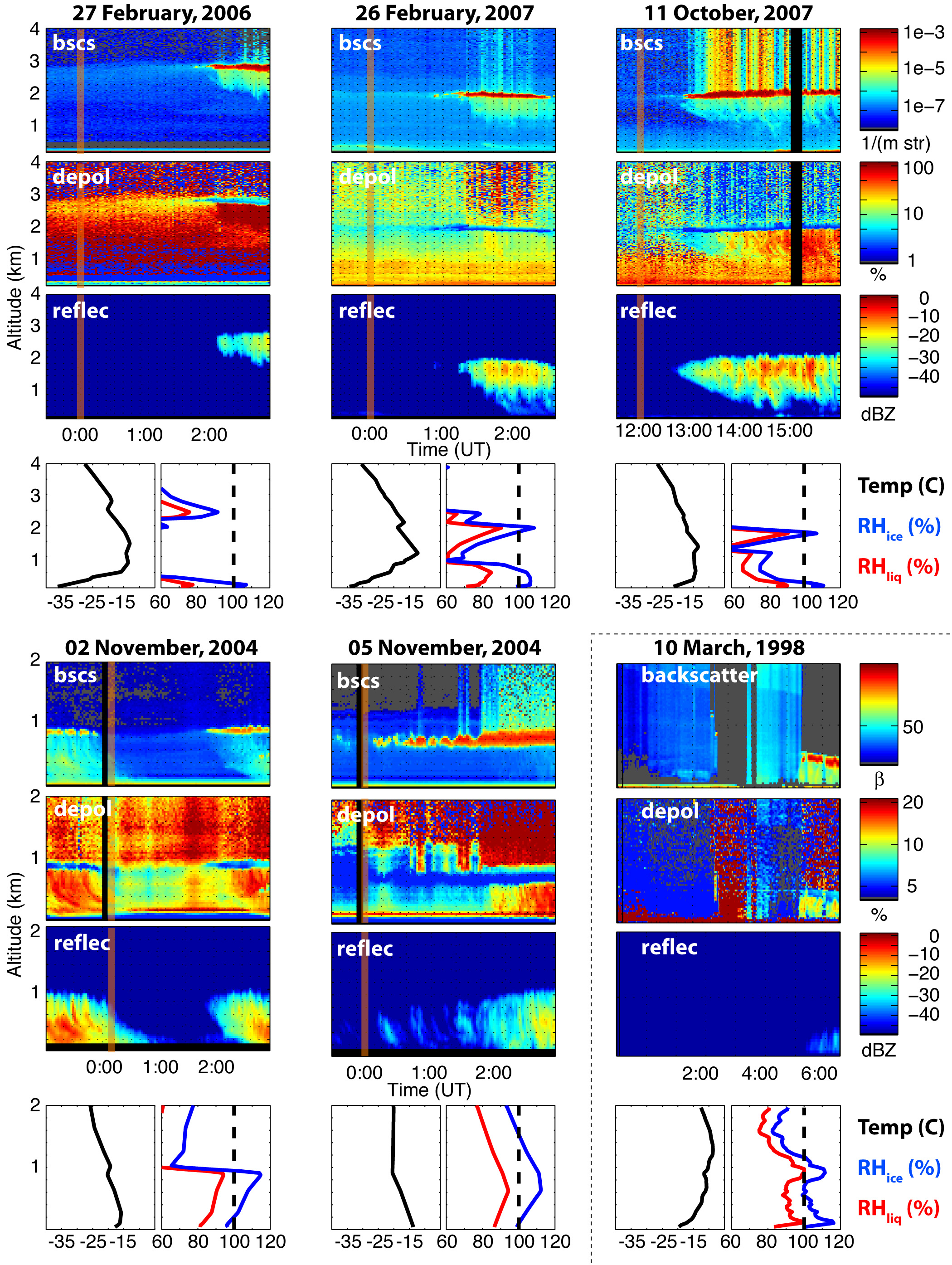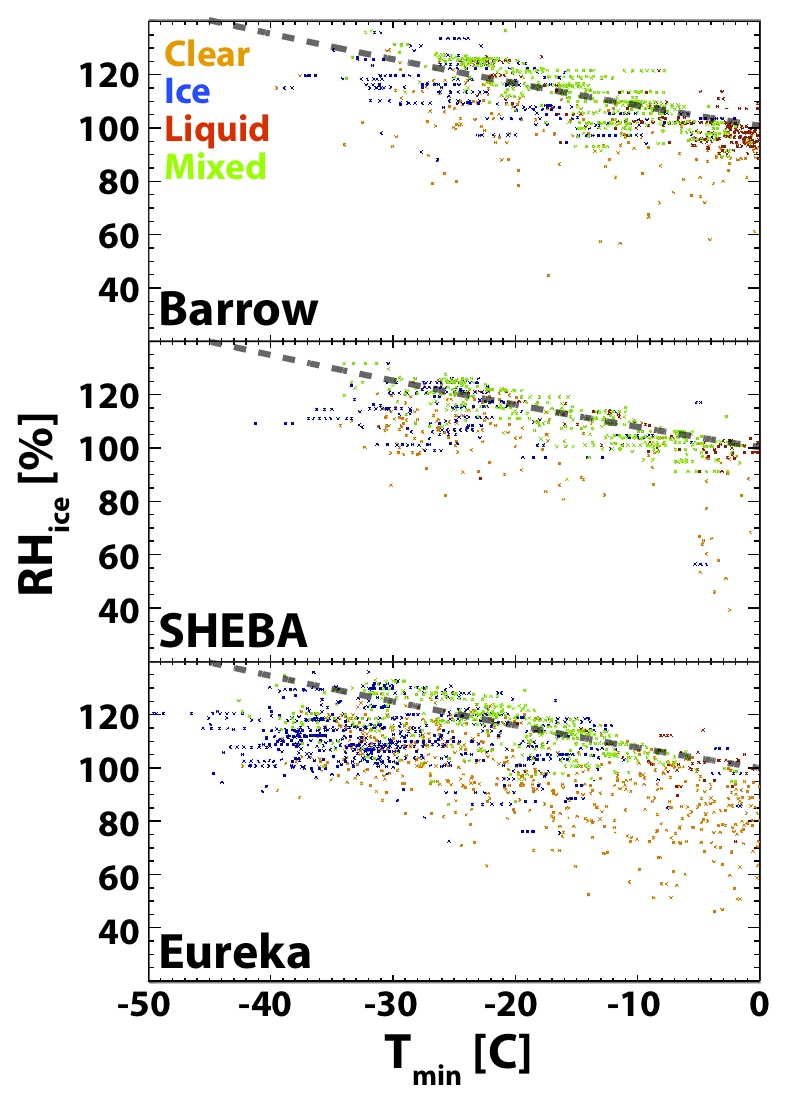Ground-Based Measurements in Support of Liquid-Dependent Ice Nucleation in Arctic Clouds
Submitter:
de Boer, Gijs — University of Colorado Boulder
Area of research:
Cloud Distributions/Characterizations
Journal Reference:
Science
Arctic climate is changing at a rate exceeding that of other regions. Prediction of the future rate of change of Arctic climatic processes requires the use of sophisticated earth-system models. While improvements have been made, models continue to struggle to accurately represent cloud properties, particularly for complex mixed-phase cloud systems, resulting in errors in simulated surface and atmospheric energy budgets. How and when ice forms in these clouds is information that is quite relevant to accurate parameterization of cloud properties and lifetime. In this work, results from ground-based measurements taken at Eureka, Canada, the DOE ARM site at Barrow, Alaska, and over the Beaufort Sea during the Surface Heat Budget of the Arctic (SHEBA) campaign are presented as evidence supporting liquid-based ice nucleation in Arctic mixed-phase stratiform clouds. A combination of individual cases and long-term statistics are provided.
Impact
Measurements included in this analysis come from lidars, radars, and microwave radiometers. Initially, six cases demonstrating the initialization of a mixed-phase stratiform cloud are analyzed. All demonstrate a similar pattern, with lidar backscatter and radar reflectivity showing an initially clear atmosphere that is cold (-20 C) and usually supersaturated with respect to ice (110% for most cases). Despite this, there is no ice that forms. As the atmosphere continues to cool and relative humidity continues to increase, formation of a haze layer is detected by lidar. Eventually, water saturation is reached, and a liquid layer forms, soon followed by frozen precipitation falling out of the bottom of the liquid cloud. The timing of these events appears to link the formation of ice crystals to the presence of the liquid water.
In addition to these presented cases, a statistical analysis of a larger variety of cases is completed. In this analysis, distributions of phase relative to profile minimum temperature and maximum relative humidity with respect to ice are determined. For all locations, mixed-phase clouds are the most common phase for clouds occurring between -25 and -10 C. At colder temperatures ice-only clouds are more prevalent, while warmer temperatures feature liquid only clouds. Plotting the distribution of phases on temperature-relative humidity axes shows the dominance of the mixed-phase at moderate temperatures. This supports the notion of liquid-dependent ice nucleation at moderate temperatures.
Summary
Observations presented provide evidence for liquid-dependent ice nucleation at moderate temperatures (-25 to -10 C) in the Arctic. Ice is not observed to form readily via the deposition or condensation modes prior to the formation of supercritical liquid droplets. While the exact pathways of ice nucleation cannot be determined, the appearance of ice only after liquid is present supports liquid-dependent pathways such as contact nucleation, immersion freezing, or evaporation freezing. These observations have implications on the simulation of ice nucleation in models at all scales. Many current microphysical schemes allow ice nucleation below water saturation at moderate temperatures. This ice may act as a sink of water vapor, reducing the atmospheric relative humidity and delaying the onset of liquid clouds. Observations presented imply that limiting ice nucleation below water saturation may be prudent at temperatures in the range provided.



